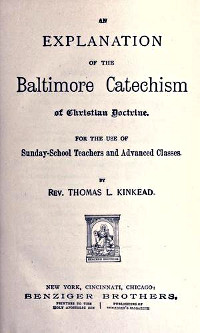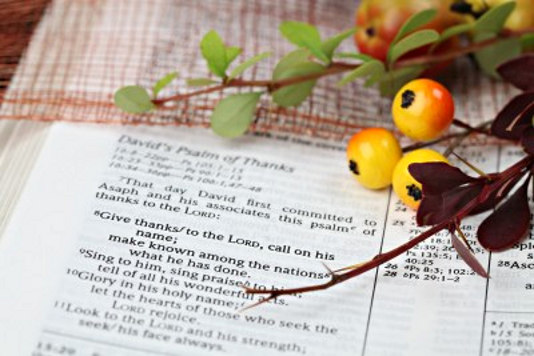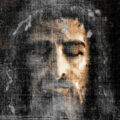
Lesson 21
| 231 | Q. | What is an indulgence? |
| A. | An indulgence is the remission in whole or in part of the temporal punishment due to sin. |
I have explained before what the temporal punishment is; namely, the debt which we owe to God after He has forgiven our sins, and which we must pay in order that satisfaction be made. It is, as I said, the value of the watch we must return after we have been pardoned for the act of stealing. I said this punishment must be blotted out by our penance. Now, the Church gives us an easy means of so doing, by granting us indulgences. She helps us by giving us a share in the merits of the Blessed Virgin and of the saints. All this we have explained when speaking in the Creed of the communion of saints.
| *232 | Q. | Is an indulgence a pardon of sin, or a license to commit sin? |
| A. | An indulgence is not a pardon of sin, nor a license to commit sin, and one who is in a state of mortal sin cannot gain an indulgence. |
If you are in a state of mortal sin you lose the merit of any good works you perform. God promises to reward us for good works, and if we are in the state of grace when we do the good works, God will keep His promise and give us the reward; but if we are in mortal sin, we have no right or claim to any reward for good works, because we are enemies of God. For this reason alone we should never remain even for a short time in mortal sin, since it is important for us to have all the merit we can. Even when we will not repent and return to Him, God rewards us for good works done by giving us some temporal blessings or benefits here upon earth. He never allows any good work to go unrewarded any more than He allows an evil deed to go unpunished. Although God is so good to us we nevertheless lose very much by being in a state of mortal sin; for God’s grace is in some respects like the money in a bank: the more grace we receive and the better we use it, the more He will bestow upon us. When you deposit money in a savings bank, you get interest for it; and when you leave the interest also in the bank, it is added to your capital, and thus you get interest for the interest. So God not only gives us grace to do good, but also grace for doing the good, or, in other words, He gives us grace for using His grace.
| 233 | Q. | How many kinds of indulgences are there? |
| A. | There are two kinds of indulgences – plenary and partial. |
| 234 | Q. | What is a plenary indulgence? |
| A. | A plenary indulgence is the full remission of the temporal punishment due to sin. |
“Full remission”; so that if you gained a plenary indulgence and died immediately afterwards, you would go at once to Heaven. Persons go to Purgatory, as you know, to have the temporal punishment blotted out; but if you have no temporal punishment to make satisfaction for, there is no Purgatory for you. Gaining a plenary indulgence requires proper dispositions, as you may understand from its very great advantages. To gain it we must not only hate sin and be heartily sorry even for our venial sins, but we must not have a desire for even venial sin. We should always try to gain a plenary indulgence, for in so doing we always gain at least part of it, or a partial indulgence, greater or less according to our dispositions.
| 235 | Q. | What is a partial indulgence? |
| A. | A partial indulgence is the remission of a part of the temporal punishment due to sin. |
| *236 | Q. | How does the Church by means of indulgences remit the temporal punishment due to sins? |
| A. | The Church by means of indulgences remits the temporal punishment due to sin by applying to us the merits of Jesus Christ, and the superabundant satisfactions of the Blessed Virgin Mary and of the saints, which merits and satisfactions are its spiritual treasury. |
“Superabundant” means more than was necessary. (See explanation of communion of saints in the “Creed.”)
| 237 | Q. | What must we do to gain an indulgence? |
| A. | To gain an indulgence we must be in a state of grace and perform the works enjoined. |
“Works” – to visit certain churches or altars; to give alms; to say certain prayers, etc. For a plenary indulgence it is required in addition to go to confession and Holy Communion, and to pray for the intention of our Holy Father the Pope; for this last requirement it is sufficient to recite one Our Father and one Hail Mary. Now, what does praying for the intention of the Pope or bishop or anyone else mean? It does not mean that you are to pray for the Pope himself, but for whatever he is praying for or wishes you to pray for. For instance, on one day the Holy Father may be praying for the success of some missions that he is establishing in pagan lands; on another, he may be praying that the enemies of the Church may not succeed in their plans against it; on another, he may be praying for the conversion of some nation, and so on; whatever he is praying for or wishes you to pray for is called his intention.
There are three basic ways of gaining a partial indulgence. A partial indulgence can be gained by: 1) raising one’s heart to God amidst the duties and trials of life and making a pious invocation, even only mentally; 2) giving of oneself or one’s goods to those in need; 3) voluntarily depriving oneself of something pleasing, in a spirit of penance.
A partial indulgence is also granted for reciting various well-known prayers, such as the acts of faith, hope, charity and contrition, and for performing certain acts of devotion, such as making a Spiritual Communion.
To gain an indulgence you must also have the intention of gaining it. There are many prayers that we sometimes say to which indulgences are attached, and we do not know it. How can we gain them? By making a general intention every morning while saying our prayers to gain all the indulgences we can during the day, whether we know them or not. For example, there is a partial indulgence granted us every time we devoutly make the Sign of the Cross or devoutly use an article of devotion, such as a crucifix or scapular, properly blessed by any priest. Many may not know of these indulgences; but if they have the general intention mentioned above, they will gain the indulgence every time they perform the work. In the same way, by having this intention all those who are in the habit of going to confession every two weeks are able to gain a plenary indulgence when they fulfill the other prescribed conditions for gaining a plenary indulgence, even when they do not know that they are gaining the indulgence.
Since partial indulgences were formerly designated by specific amounts of time, you sometimes see printed after a little prayer: An indulgence of forty days, or, an indulgence of one hundred days, or of a year, etc. What does that mean? Does it mean that a person who said that prayer would get out of Purgatory forty days sooner than he would have if he had not said it? No. I told you how the early Christians were obliged to do public penance for their sins; to stand at the door of the church and beg the prayers of those entering. Sometimes their penance lasted for forty days, sometimes for one hundred days, and sometimes for a longer period. By an indulgence of forty days the Church granted the remission of as much of the temporal punishment as the early Christians would have received for doing forty days’ public penance. Just how much of the temporal punishment God blotted out for forty days’ public penance we do not know; but whatever it was, God blotted out just the same for one who gained an indulgence of forty days by saying a little prayer to which the indulgence was attached. But why, you may wonder, did the early Christians do such penances? Because in those days their faith was stronger than ours, and they understood better than we do the malice of sin and the punishment it deserves. Later the Christians grew more careless about their religion and the service of God. The Church, therefore, wishing to save its children, made it easier for them to do penance. If it had continued to impose the public penances, many would not have performed them, and thus would have lost their souls.






















